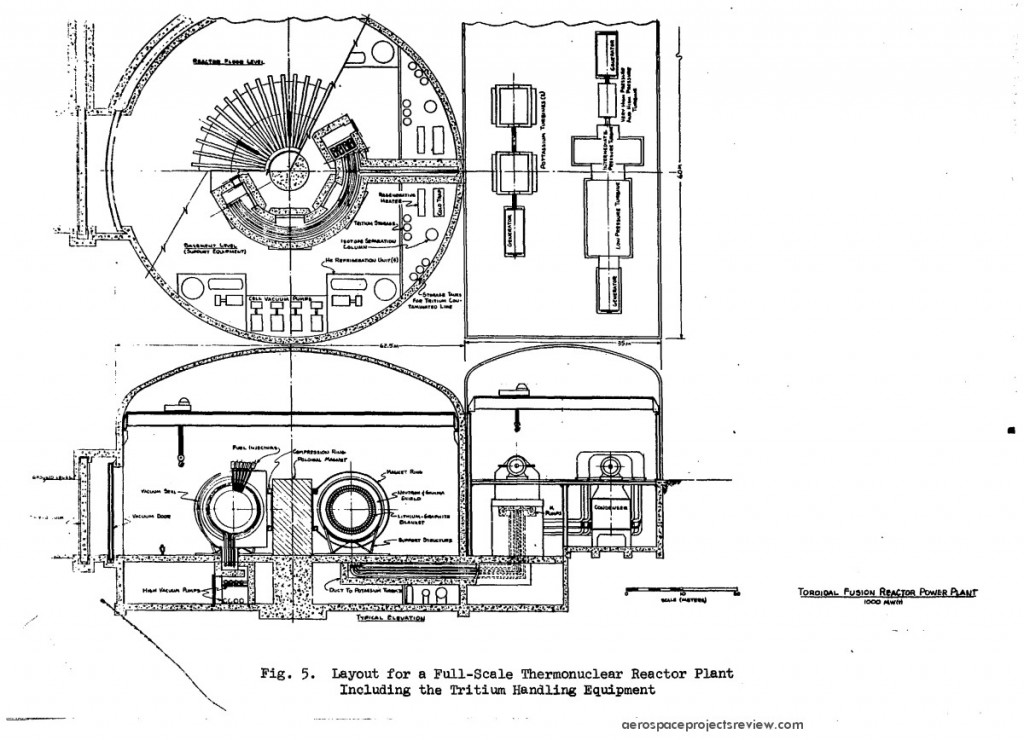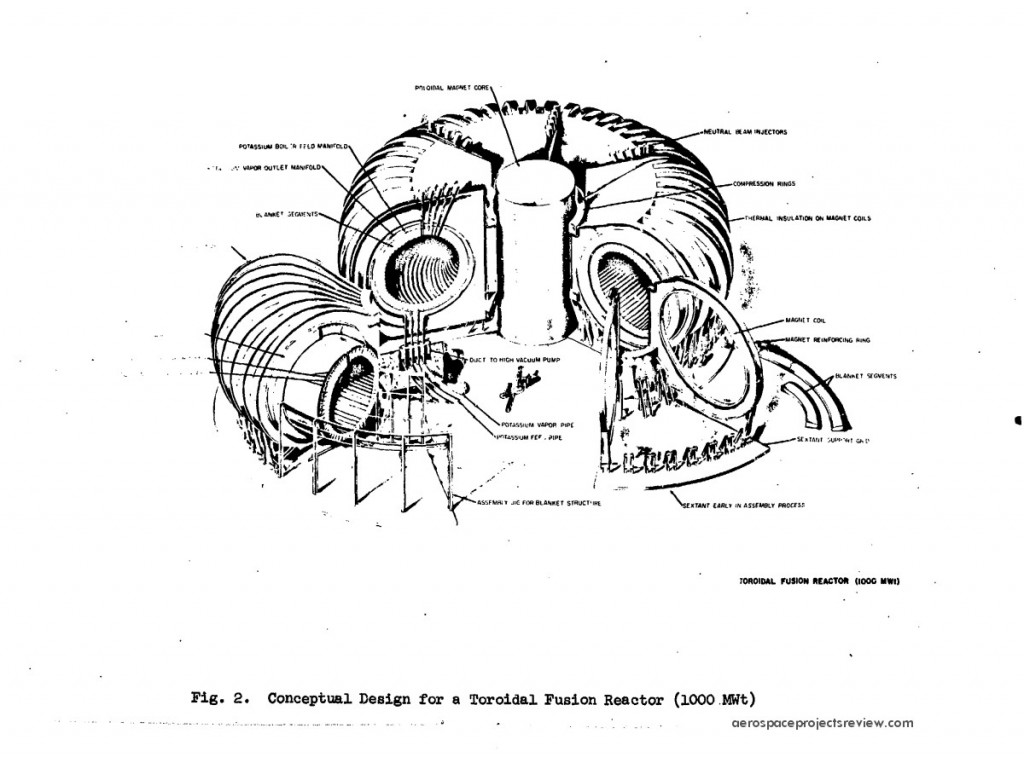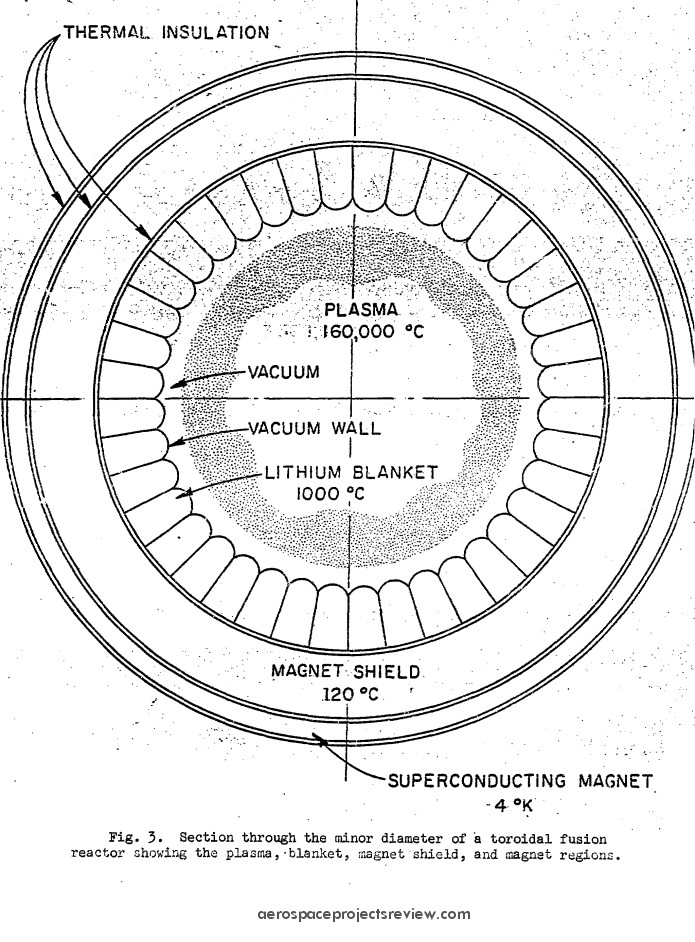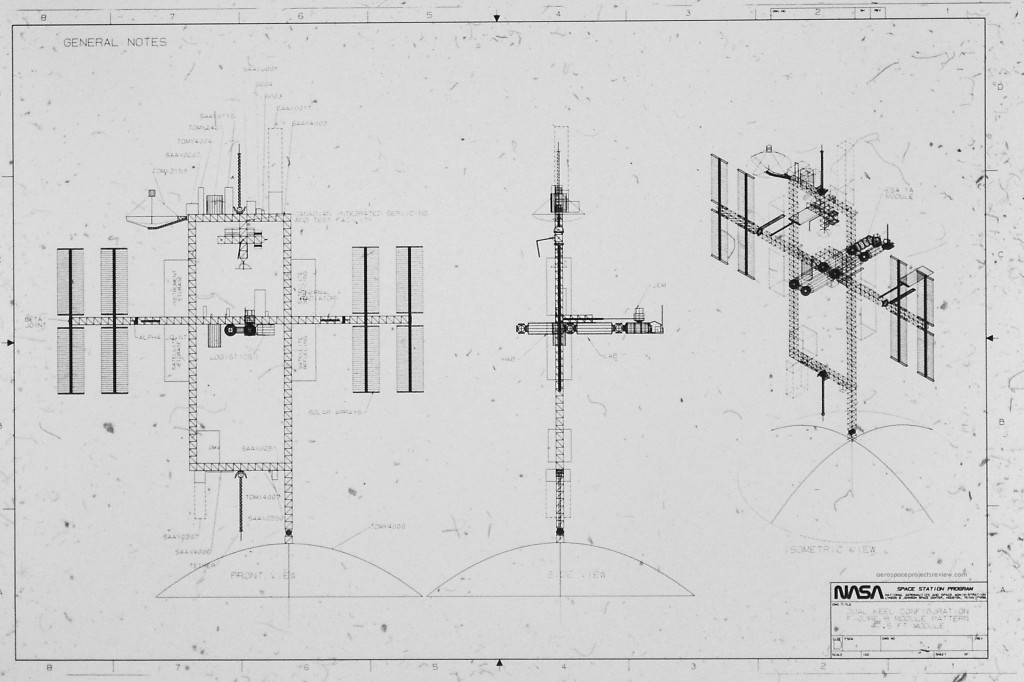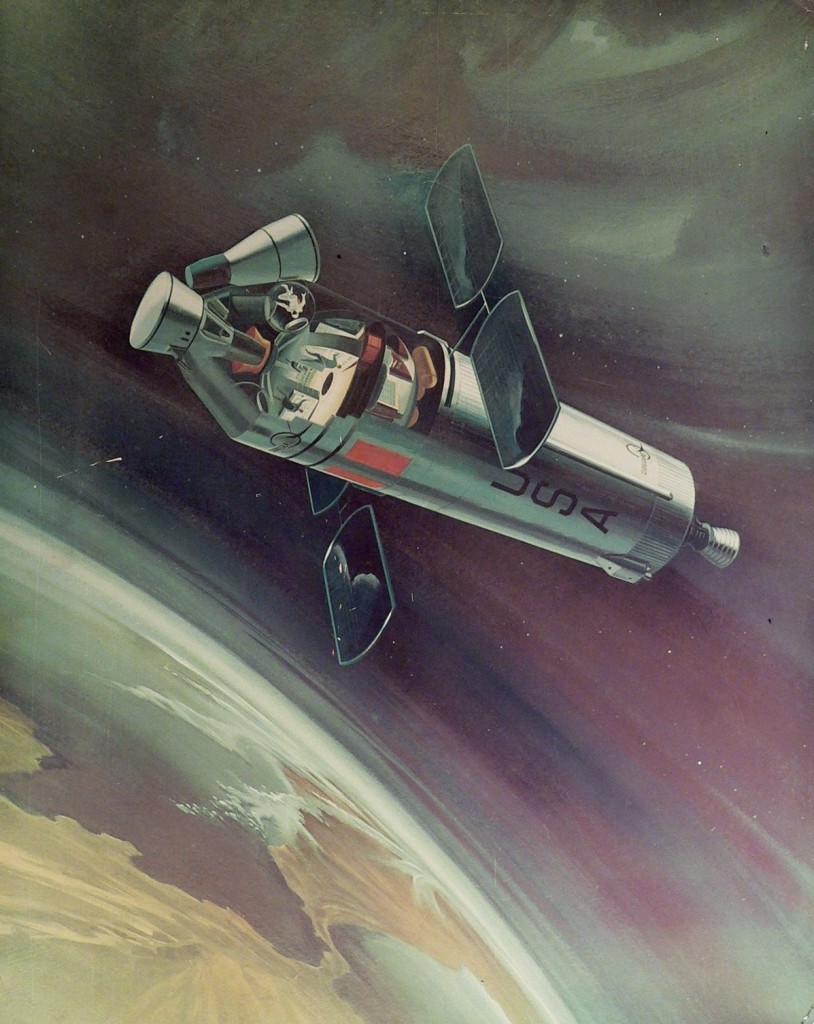Fusion power has been about 10 years away for the last 50 years or so. Still, experts in the field have from time to time gone ahead and designed operational reactors based on then-current assumptions. One such design study was done in 1972 by staff at the Oak Ridge National Lab, reported on in early 1973. This was a 1000 megawatt commercial fusion powerplant based on the Tokamak torus-type reactor. The work was sponsored by the US Atomic Energy Commission.
A 30,000 gauss superconducting toroidal electromagnet would serve as the deuterium and tritium containment and compression field, driving up pressure and temperature to fusion levels. Neutrons spit out by the reaction would be absorbed by a thick blanket of liquid lithium; absorption of the neutrons would cause the lithium to fission and create tritium at a rate higher than tritium is consumed in fusion, thus making the system self sustaining as far as tritium. While a reactor like this, if made workable, would not have the sort of safety issues associated with fission reactors (see: Chernobyl, Fukushima), there would still be the potential issue of many tons of molten lithium. At the best of time lithium and the oxygen in air do not get along well; melt the lithium and expose it to oxygen – say, via a split weld or a broken pipe – and you’d have one spectacular magnesium-like fire that would probably reduce the entire plant (including the concrete structure) to smoldering ash.
Needless to say, no commercial powerplant like this has been built. One like it is… at least 10 years away.
